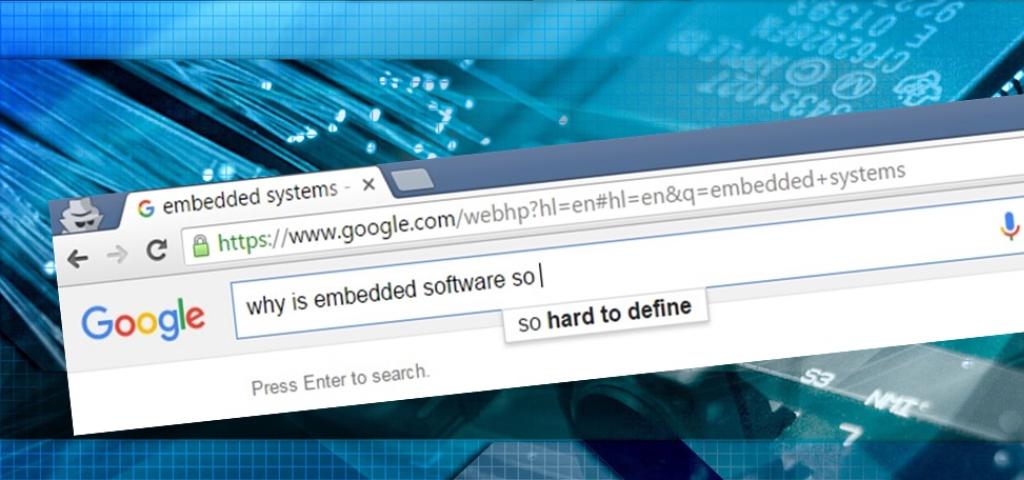
Two to Tango: When Hardware Met Software

Try going incognito on Google (as if you’re on a covert mission), and type “Why is embedded software so” and see what you get. It’s an interesting a dilemma.
Autocomplete is a wonderful thing. You can certainly question how accurately the suggested word fits your search, but it still says a lot about what popular perceptions and dilemmas are floating out in the world.
In truth, it is actually hard to define embedded software even though it is all around us, and the growth of the Internet of Things (IoT) only makes it even more omnipresent in our lives. So, getting this dilemma sorted out is definitely worthwhile.
Highly customized and purpose-built, embedded software is hard to define because it usually calls for a whole solution. And as Alan Kay mentioned, “people who are really serious about software should make their own hardware.” Aha! Here’s the second half of the puzzle: hardware. Everything must be tuned and built to fit perfectly on selected hardware, creating the one-size-does-not-fit-all conundrum.
Do we have chemistry?
The problem here is like a dating dilemma – while things seem good from a distance, it’s only when you get closer that you know if this is the one! In the manufacturing world that translates to prototyping. As any analytical technologists would tell you, this is a laborious process of carefully comparing data sheets, prioritizing and weighing the results in a spreadsheet, and then picking the best possible hardware and software fit. It looks great on paper. When you put them together, they should work, right?
Wrong! This is where years of dating flash before your eyes. Studies show that the average total resources devoted to hardware bring up is 39%, and that has been pretty stable for the last years. The time spent on debugging processes and systems integration are also major pressure points for keeping to the schedule – every developer’s main challenge. A hardware and software solution that needs no bring-up time would certainly come in handy. It will surely speed up the time to joy for your engineers, not to mention allowing them to spend time enhancing your product, not assembling the basic steps.
Making it last
Fast forward many design and development months. Your product is ready, and you start shipping. Everything works, but you still haven’t figured out the maintenance part. Software needs updating, and just hoping for the best is not going to stop the next Heartbleed bug, after all, even the greatest relationships have issues to resolve. Integrating new technology and managing code size are the number 1 and 2 technology challenges. It can be done very easy, and no one has to get hurt. It does require a complete magic solution though, and for that we go back to the hardware dilemma.
At Wind River, we didn’t start to build hardware, but we took hardware enablement to the next level. Enter Avnet and a wonderful partnership. Our Pulsar Linux comes packaged with hardware, but it’s also available to download too. Given both options, it may very well be love at first sight!

